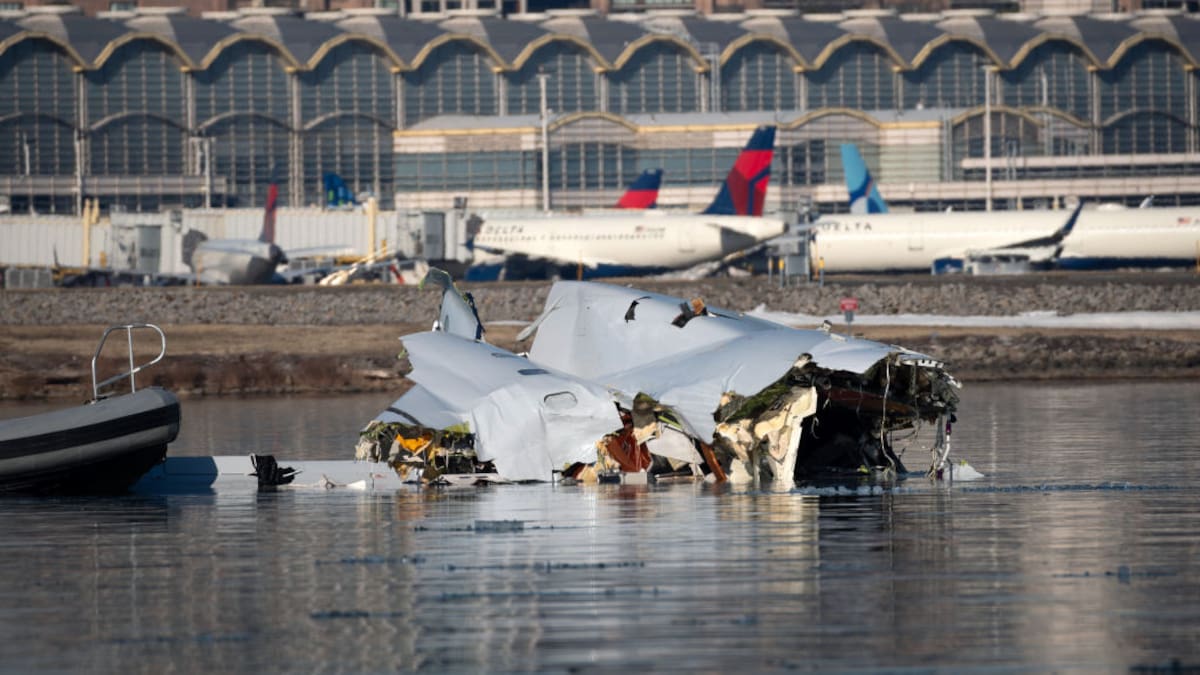The military helicopter was on a check flight and testing night-vision goggles when it struck the jet as it was descending into Ronald Reagan National Airport, killing 67 people on board both aircraft in the deadliest plane crash in the US since 2001.
At one point during the flight before the collision the helicopter’s pilot called out that the Black Hawk was at 300ft, but the instructor pilot said the helicopter was at 400ft, Homendy said.
“We are looking at the possibility there may be bad data. We’re looking at, were they seeing something different in the cockpit that differs from the FDR data,” Homendy said.
“Neither pilot made a comment discussing an altitude discrepancy at this time,” she added.
“At this time we don’t know why there was a discrepancy between the two.”
She said while they are confident the Black Hawk was flying at 278ft at the time of the collision, this may not have been what the helicopter crew were seeing in the cockpit.
“We are seeing conflicting information in the data,” she said.
Homendy added that 17 seconds before the crash there was radio transmission audible on both black boxes that had directed the Black Hawk to “pass behind” the AA jet.
Data from the helicopter’s black box also “indicated that the portion of the transmission that stated ‘pass behind the jet’ may not have been received by the Black Hawk crew”.
A message from the traffic controller approximately two minutes before the collision stating that the AA jet was circling may also not have been heard by the helicopter.
The NTSB is also investigating whether the night-vision goggles worn by the helicopter crew could have impacted their visibility.
‘Traffic, traffic’
According to a Washington Post report, as the American Airlines jet approached for landing, it received an automated alert in the cockpit, stating “traffic, traffic” about 20 seconds before the collision.
Passenger planes in the United States are required to have an anti-collision technology that is designed to alert them of other aircraft when their paths could intersect. The Traffic Alert and Collision Avoidance System, or TCAS, works by automatically communicating with transponder-equipped aircraft, exchanging information about their positions and calculating the trajectories to warn of a possible collision.
The first type of cockpit warning is a verbal one – “traffic, traffic” – that escalates into a more urgent alert instructing the pilots to immediately correct course, known as a resolution advisory. Airline pilots have received more than 100 resolution advisories over the past decade warning of a potential midair collision near Reagan National Airport, a Post examination found.
TCAS isn’t designed to deliver resolution advisories below 1000 feet, in part to avoid overwhelming pilots with alerts while they are concentrating on landing, according to aviation experts. The NTSB is still investigating what triggered the traffic alert, Homendy said.
The plane was at 313 feet two seconds before the crash, descending at 448 feet per second. Then, one second before impact, the plane nosed up by nine degrees, reports the Washington Post.
– with Washington Post

